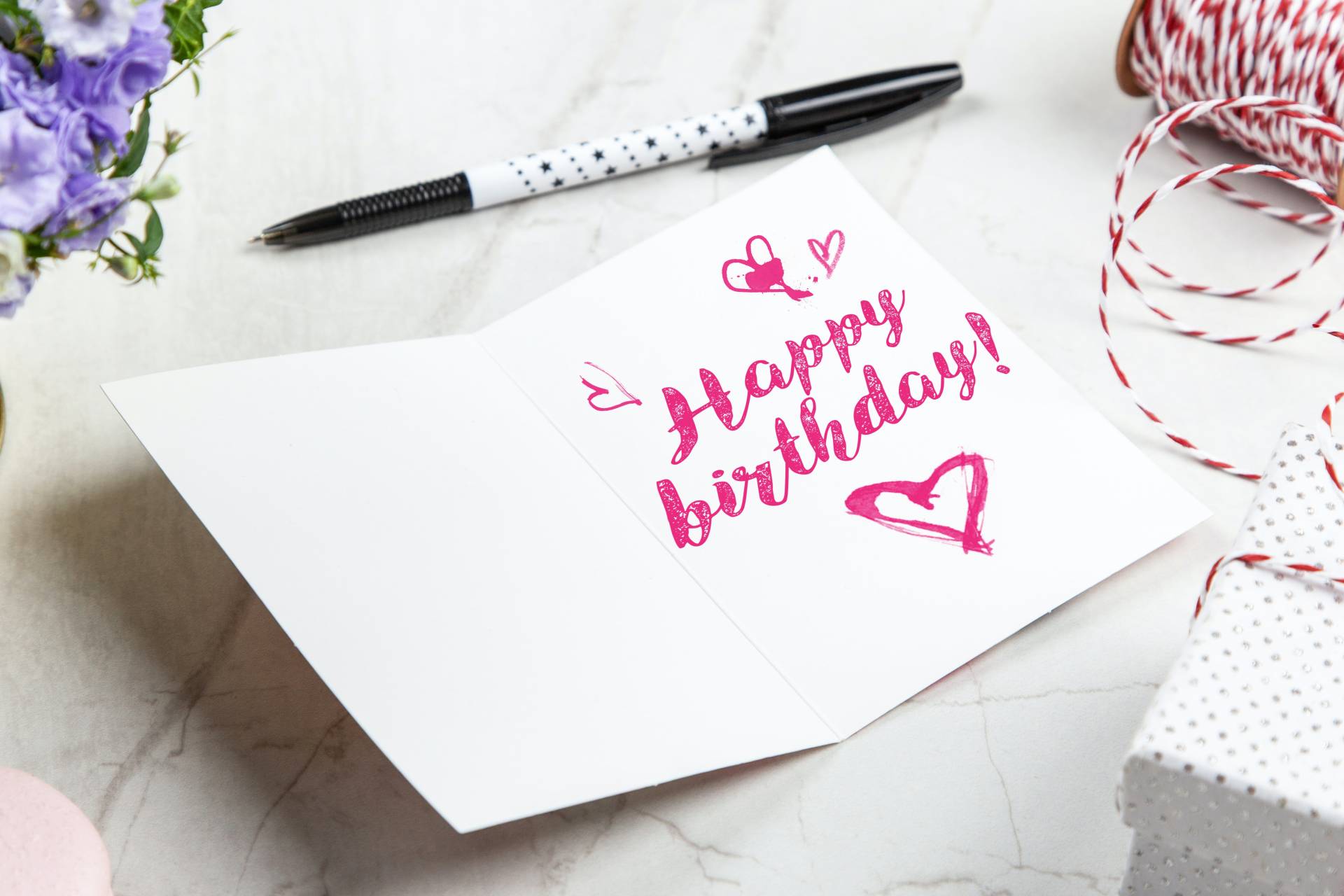In a busy digital world, one great way to build human connection and trust with your team is by sending cards. Celebrations, congratulations, thanks, sympathy—all can be occasions for personal touchpoints with your team, customers, and clients. You may already have a calendar of employee birthdays, a box of cards, and a pen at the ready. But if you don’t, what do you need to get started? And most importantly, what should you write? Here are a few pointers to help you write and send thoughtful cards that connect, inspire trust, and leave your people feeling seen and heard.
1. Match your card to the occasion
Just like the salutation you use makes a first impression on the inside of the card, the stationery you choose for your notes makes a first impression upon receipt. Keep a stack of classic blank cards, in a neutral color or one of your brand colors, for last-minute needs. These cards are also helpful to have on hand for folks you don’t know well. Consider if there are any occasions when you’d want to include a small gift card, and keep a stack of those on hand, too.
Humorous cards have their place for lighthearted events, such as birthdays, and can become an office tradition. Hand-selecting any sort of prewritten card can show a team member that you understand them and their sense of humor—just be sure to add your own message, too.
December holiday cards are fun and give you and your team lots of room for creativity. You’ll want to be sensitive about other major holidays, as well—not everyone celebrates their most important holiday in December. You have an opportunity to build loyalty by sending celebratory cards that reflect your team members’ values.
Sympathy cards can feel especially difficult to write, as many people feel uncomfortable interacting with someone who’s grieving. Remember that your card is not about you, and you don’t know everything about the situation. Avoid phrases like “I’m sure you feel…” or “That must be awful” or “I once lost…” Instead, keep your message simple and honest:
I’m so sorry about your cousin. We’d love to support you by buying you coffee (see enclosed gift card) for your trip to the funeral. We’ll all be thinking of you and will be here to support you with a listening ear or a little extra space when you’re back.
Thank-you notes have their own set of norms. For a step-by-step how-to on writing thank-you notes, check out this article from the gifting experts at Spoonful of Comfort.
2. Be genuine
If you’ve ever been the recipient of a mass mailing (i.e. all of us), you know how impersonal it feels when a sender fills in the blanks. Or, worse, when they simply write a mass email and have a computer fill in your name. Obviously, you don’t want to make your team feel this way when writing a thoughtful card. But rather than reinventing the wheel every time you write a card, you can follow this format:
Name,
You can include “Dear” or another salutation if you’d like, but opening your message with your recipient’s name feels familiar and personal. It’s crucial to get this part of the message right. Only use a title, such as Mr., Mrs., Sgt., Dr., etc., if you’re absolutely sure that is the correct title for your recipient. Triple-check your recipient’s name spelling. How you open your note leaves a first impression—make it a good one.
Here’s why I’m writing.
This section is where you share your thanks, wishes, appreciation, condolences, or congratulations. If you’re using a card with a prewritten message or design, as opposed to personal or company stationery, the card should match this message.
Personal connection.
Now that you’ve gotten the name correct and your intro written, you’re ready to share the most powerful part of your message. This is where you personalize your message to your recipient. No matter how well you do or don’t know a person, you should be able to make a personal connection here. This is also where you can offer a personal benefit to your recipient. But use this option sparingly, and only if you plan to follow through. Finally, don’t make this section about yourself.
For example, if you’re writing a birthday card to a longtime, close colleague, you might write, “I remember when we thought 40 would never come, yet here it is—and you make it look fabulous!” If you’re writing a sympathy card to a salaried employee, you might write, “I know grief hits us all in different ways. Please don’t hesitate to take the time you need to be with your family.”
Again, why I’m writing.
This section puts a bow on the note, so to speak. “Again, thank you for your hard work here. You’ve really left an impact on our team.”
Signature
You can end your note using the phrase or word of your choice, or simply jump to your signature.
3. Handwrite your cards
Finally, there’s something special about the imperfection and time investment of a handwritten card. Because your handwriting is unique to you, handwriting a card provides a human connection with your recipient. (Plus, this gives you an excuse to keep a few nice pens on your desk.)
In a pinch? There are services that allow you to type a message, and then a robot “handwrites” your card. This can be an expensive option, but helpful for mailings sent as part of a workflow (for example, as thank-you notes for your top clients).
With a little planning ahead, you’ll be set to write and send thoughtful cards, building your team’s community one sentiment at a time!













